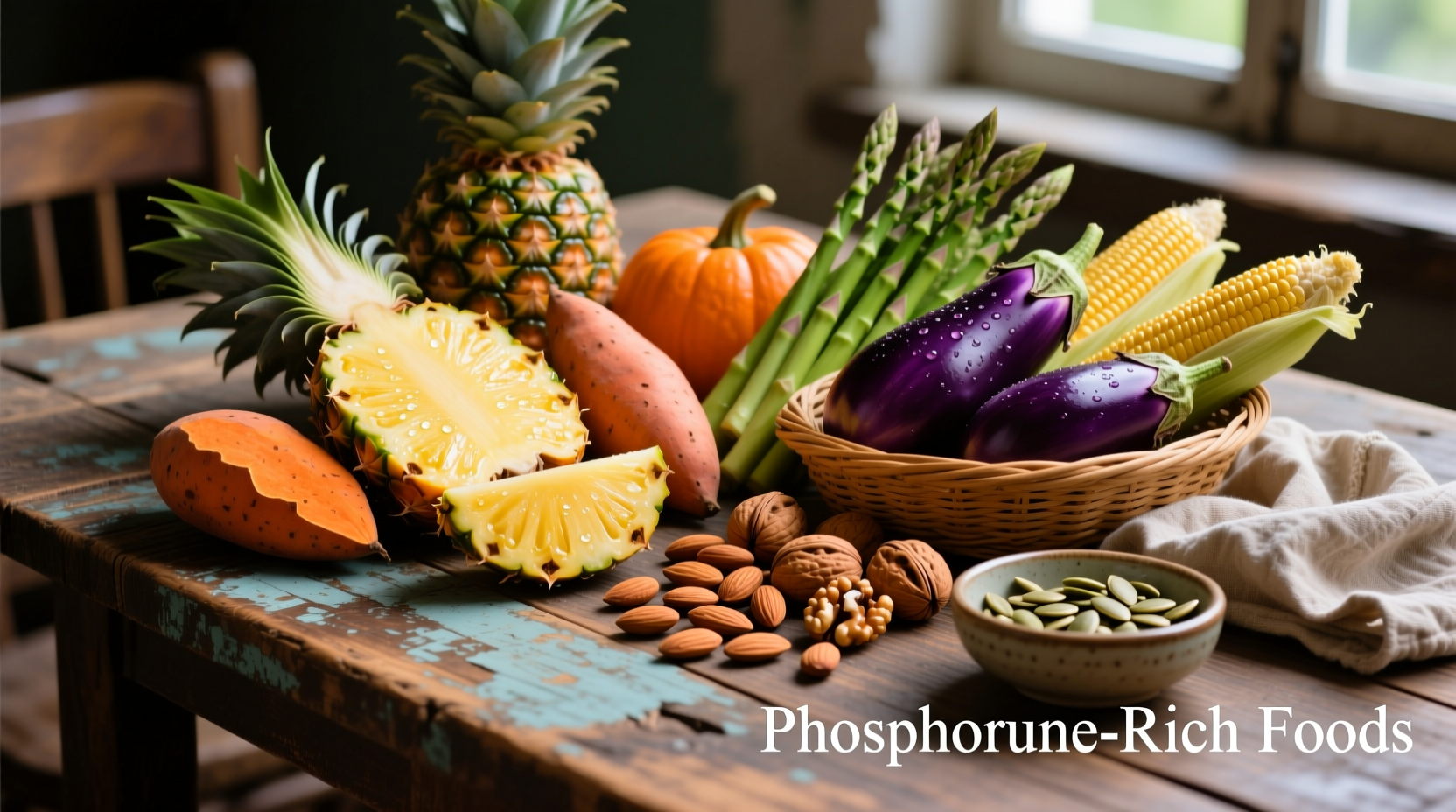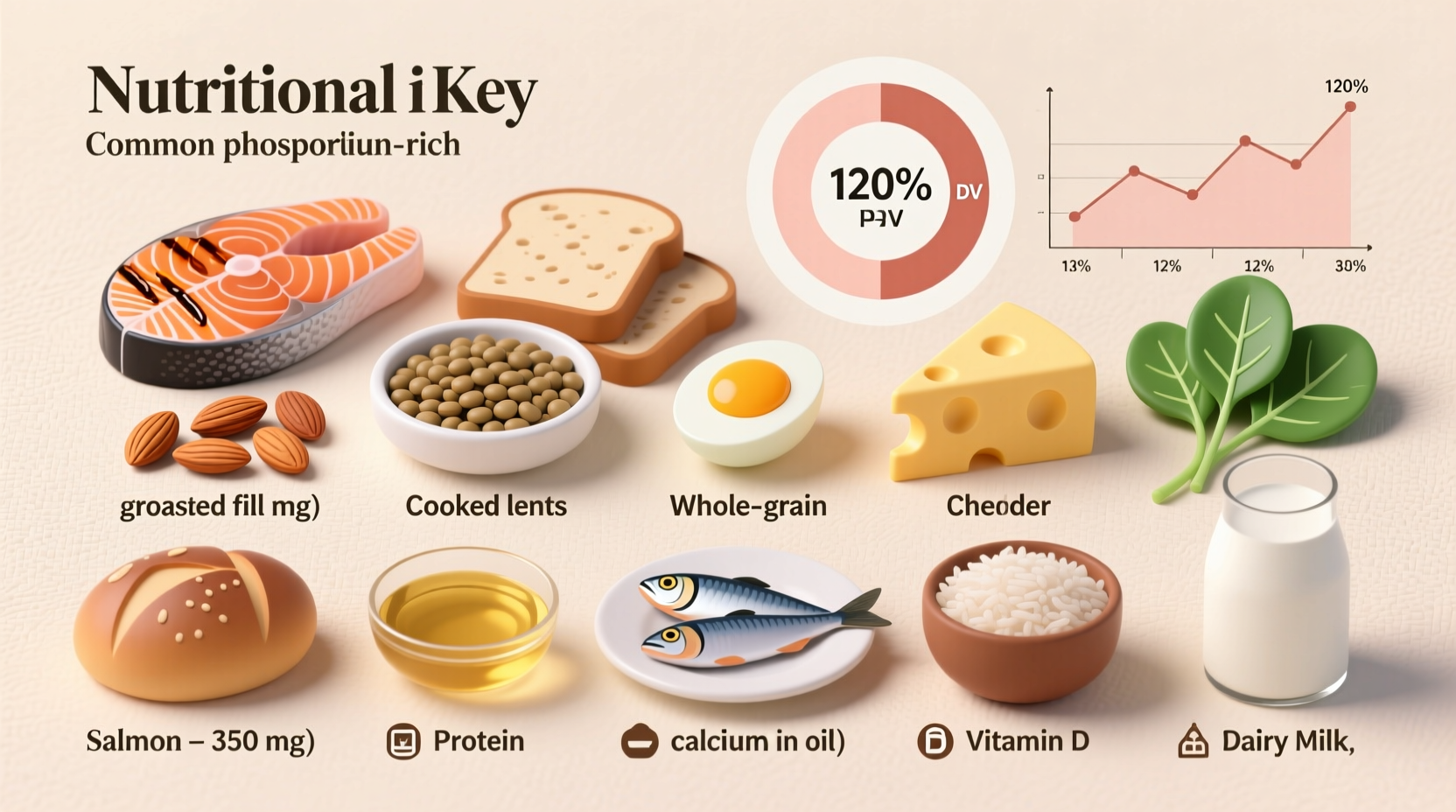Discover the complete guide to dietary phosphorus sources that support strong bones, optimal kidney function, and sustained energy levels. Whether you're managing a health condition, building muscle, or simply eating smarter, this resource delivers precise nutrient values and practical eating strategies you can implement immediately.
Why Your Body Needs Phosphorus
Phosphorus works alongside calcium to build strong bones and teeth, forming 85% of your body's phosphorus stores. This mineral also plays critical roles in:
- Converting food into usable energy (ATP production)
- DNA and RNA synthesis for cell growth
- Filtering waste through kidneys
- Maintaining healthy nerve conduction
The National Institutes of Health recommends 700mg daily for adults, with teens needing up to 1,250mg during growth spurts. Athletes and pregnant women often require additional phosphorus to support increased metabolic demands. NIH research confirms most Americans meet requirements through diet, but certain medical conditions may necessitate careful monitoring.
Top Animal-Based Phosphorus Powerhouses
Animal proteins provide highly bioavailable phosphorus (60-70% absorption rate) due to the absence of phytates that inhibit absorption in plant foods. These sources deliver complete protein profiles alongside phosphorus:
| Food (1 serving) | Phosphorus (mg) | % Daily Value | Bioavailability |
|---|---|---|---|
| Pumpkin seeds (1 oz) | 350 | 28% | 30-40% |
| Salmon (3 oz) | 500 | 40% | 60-70% |
| Yogurt (1 cup) | 300 | 24% | 60-70% |
| Chicken (3 oz) | 250 | 20% | 60-70% |
| Lentils (1 cup) | 180 | 14% | 30-40% |
Dairy products like milk and cheese provide phosphorus in ideal calcium-phosphorus ratios for optimal bone health. The USDA FoodData Central confirms that a single cup of nonfat yogurt contains 384mg phosphorus with excellent bioavailability. Fish enthusiasts benefit doubly—salmon delivers both phosphorus and vitamin D, which enhances calcium absorption.

Plant-Based Phosphorus Sources: Maximizing Absorption
While plant foods contain phosphorus, its absorption is reduced by 30-40% due to phytates. Smart preparation techniques significantly improve bioavailability:
- Soaking and sprouting: Reduces phytate content in beans and grains by up to 60%
- Fermentation: Sourdough bread offers 20% more absorbable phosphorus than regular bread
- Pairing with vitamin C: Citrus fruits enhance mineral absorption from plant sources
Nuts and seeds stand out as exceptional plant-based sources. According to NIH research, just one ounce of pumpkin seeds delivers 350mg phosphorus—more than half the daily requirement. Combining these with vitamin C-rich foods like bell peppers creates nutrient-synergistic meals.
Special Considerations for Health Conditions
Phosphorus needs vary significantly based on health status. Understanding these context boundaries prevents potential complications:
Kidney Disease Management
Individuals with chronic kidney disease must carefully monitor phosphorus intake as damaged kidneys cannot effectively remove excess phosphorus. The National Kidney Foundation recommends limiting processed foods containing phosphate additives, which have 90-100% absorption rates compared to 40-60% for natural food sources. Choose fresh foods over packaged options to maintain safer levels.
Athletic Performance Optimization
Endurance athletes require 15-20% more phosphorus to support ATP production during prolonged activity. Research published in the Journal of the International Society of Sports Nutrition shows that adequate phosphorus intake improves oxygen utilization during intense exercise. Incorporate phosphorus-rich foods like lean meats and dairy within 45 minutes post-workout for optimal recovery.
Practical Integration Strategies
Transform this knowledge into daily habits with these actionable approaches:
Daily Phosphorus Tracker
Create a simple checklist to ensure balanced intake:
- Morning: Greek yogurt (230mg) + almonds (130mg)
- Lunch: Lentil soup (180mg) + whole grain bread (100mg)
- Dinner: Baked chicken (250mg) + roasted Brussels sprouts (75mg)
Smart Substitutions Guide
When managing phosphorus intake:
- Replace processed cheese slices (high in phosphate additives) with natural cheddar
- Choose fresh chicken over breaded frozen options (which contain phosphate preservatives)
- Opt for homemade salad dressing instead of bottled versions (often containing phosphates)
Common Phosphorus Questions Answered
Understanding these key points helps optimize your dietary approach:
Can you get too much phosphorus from food?
Natural food sources rarely cause excess phosphorus. The concern comes from phosphate additives in processed foods, which have higher absorption rates. Healthy kidneys efficiently eliminate excess phosphorus from whole foods, but struggle with the concentrated forms in sodas and packaged foods.
Which plant foods have the highest phosphorus bioavailability?
Fermented plant foods offer the best absorption. Tempeh provides 20% more bioavailable phosphorus than regular tofu. Sprouted grain bread and soaked legumes also significantly improve mineral uptake. Pairing plant sources with vitamin C-rich foods like tomatoes or citrus further enhances absorption.
Do phosphorus supplements benefit healthy individuals?
Most healthy people don't need supplements as dietary sources typically meet requirements. Supplements may interfere with medications and nutrient absorption. The NIH warns that excessive supplemental phosphorus without medical supervision can lead to calcium imbalance and vascular calcification. Always consult your healthcare provider before starting supplements.
How does cooking method affect phosphorus content?
Boiling causes minimal phosphorus loss (5-10%), while steaming preserves nearly all content. High-heat methods like grilling don't reduce phosphorus but may create compounds that affect absorption. Avoid discarding cooking water from vegetables, as some phosphorus leaches into the liquid. For maximum retention, use cooking liquids in soups or sauces.











 浙公网安备
33010002000092号
浙公网安备
33010002000092号 浙B2-20120091-4
浙B2-20120091-4